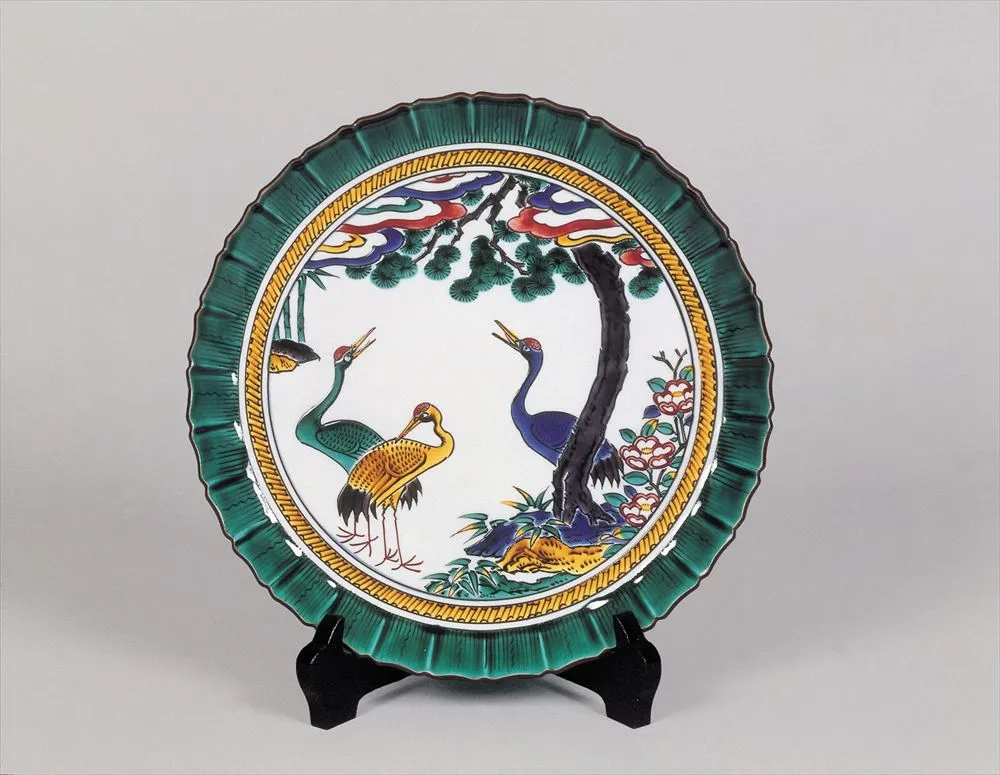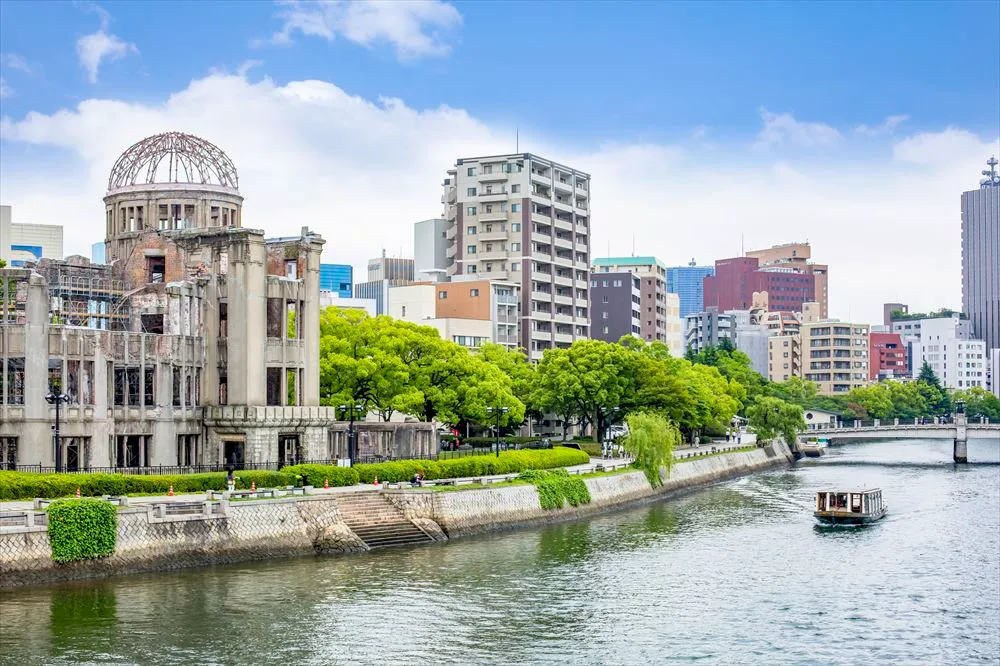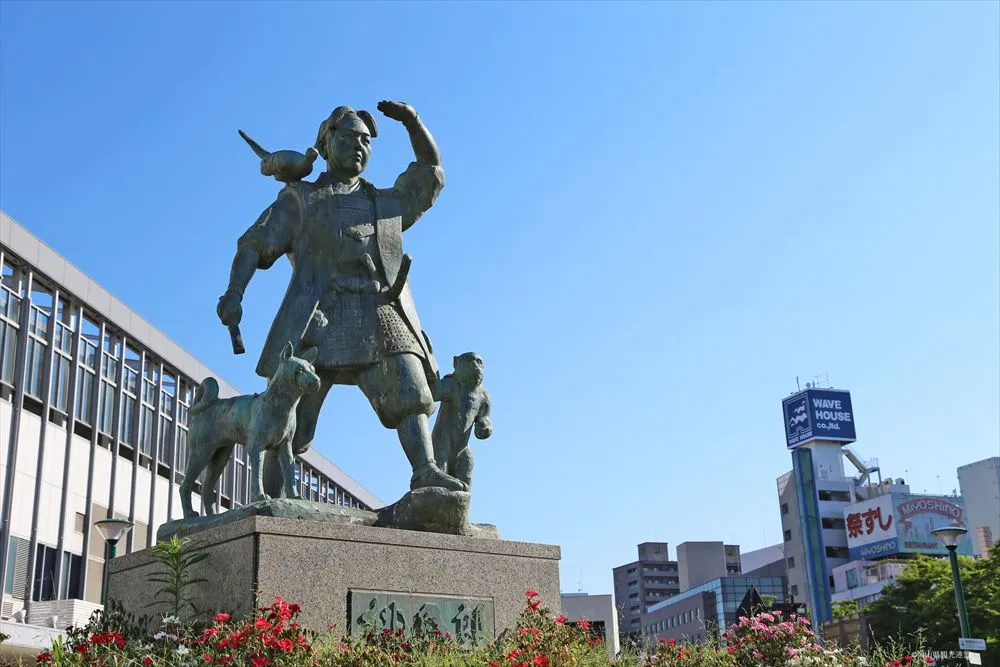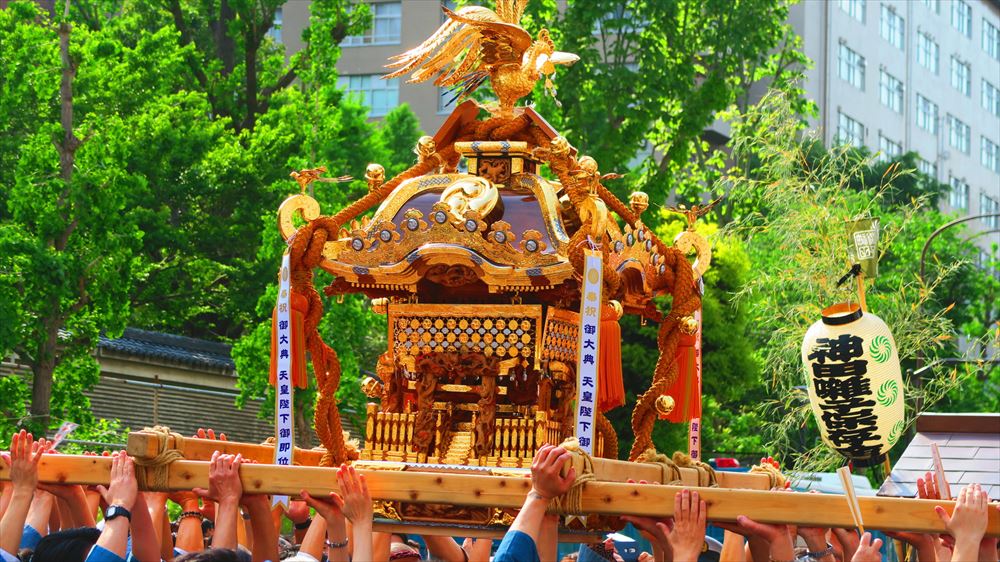Looking for your next travel destination in Japan? Or perhaps you’re seeking a journey to reconnect with yourself, far from the hustle and bustle of everyday life? If so, the Setouchi and Shikoku region is the perfect choice.
The Seto Inland Sea, Japan’s largest inland sea surrounded by the Honshu, Shikoku, and Kyushu areas, is dotted with numerous islands with their own special characteristics and offers tranquil, soothing landscapes. “Setouchi” refers to this inland sea and its surrounding coastal areas, where you can encounter art, scenic island views, and the warmth of the local people.
In Shikoku, the culture of pilgrimage and a way of life that coexists with nature are still very much alive. As you immerse yourself in breathtaking scenery and time-honored traditions, you’ll discover a side of Japan that can only be experienced here—with all five senses.
A Relaxing, Healing Journey in Setouchi and Shikoku
- Getting There
- New! Hiroshima Station Has Been Renovated
- Mt. Shiude (Mitoyo City, Kagawa)
- Iya no Kazurabashi Bridge (Miyoshi City, Tokushima)
- Onomichi (Onomichi City, Hiroshima)
- JR Shimonada Station (Iyo City, Ehime)
- KOTOHIRA-Gu (Kotohira Town, Kagawa)
- SHINSHOJI ZEN MUSEUM AND GARDENS (Fukuyama City, Hiroshima)
- Kibitsujinja Shrine (Okayama City, Okayama)
- Shoshazan Engyoji Temple (Himeji City, Hyogo)
- Setouchi Triennale 2025
- Don’t miss it! Naoshima New Museum of Art
- Hiroshima Architecture Exhibition 2025
- Awa Odori Festival in Tokushima City
- Yosakoi Festival in Kochi
Getting There
There are various ways to travel between Honshu and Shikoku, including ferries, buses, and trains. Here are some typical routes:
Okayama Sta. (Okayama) ↔ Takamatsu Sta. (Kagawa): 1 hr by rapid train Marine Liner (one-way)
Fukuyama Sta. (Hiroshima) ↔ Imabari Sta. (Ehime): 1 hr 25 min by highway bus Shimanami Liner (one-way)
New! Hiroshima Station Has Been Renovated
The new station building at JR Hiroshima Station opened in March 2025. Additionally, the Hiroshima Electric Railway streetcars will also begin operating on an elevated track on the second level later this summer. This will eliminate the steps between the JR gates and tram platforms, making transfers smoother than ever!
For Photography Lovers – Catch the Enchanting Scenery and Sights!
Mt. Shiude (Mitoyo City, Kagawa)
This mountain offers a breathtaking 352m-high spot with views of the Seto Inland Sea’s island scenery. From June to July, the mountain is painted with vibrant hydrangeas. At the summit, you’ll find ancient village ruins, and make sure to stop by the cafe in the Archaeological Museum, where you can relax while gazing at the incredible scenery all around.
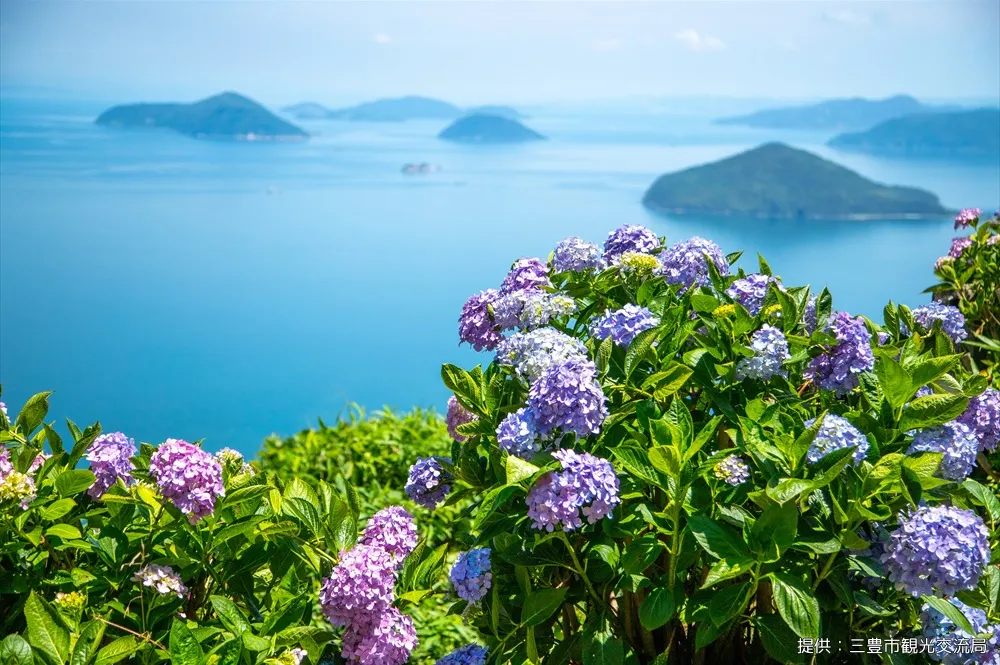
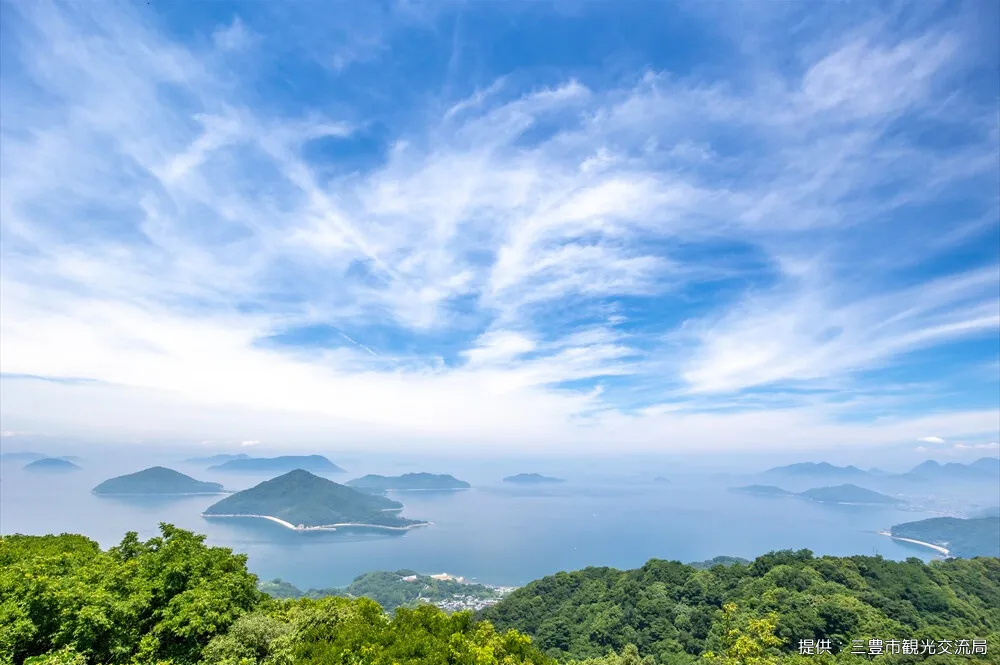
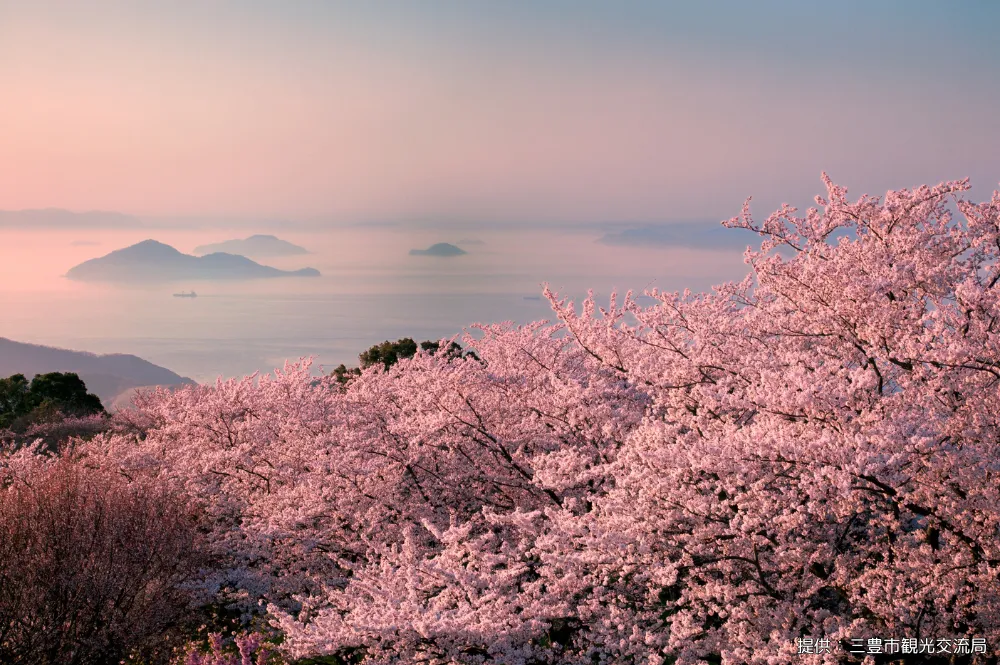
| Access | JR Takuma Sta. → 50 min by taxi or rental car |
Iya no Kazurabashi Bridge (Miyoshi City, Tokushima)
This historic 45m-long suspension bridge is made of about six tons of shirakuchikazura (Japanese ivy vines) and was once the only way to cross the valley. Walk across the bridge to experience the thrill of swaying while enjoying the magnificent natural beauty. (Bridge entry: 550 yen)

| Access | JR Oboke Sta. → 30 min by bus → Kazurabashi or Kazurabashi Yumebutai stop → 5 min walk |
Onomichi (Onomichi City, Hiroshima)
Onomichi is a port town facing the Seto Inland Sea, known for its charming atmosphere that has made it a setting for many films. The symbol of the city is Senkoji Temple, founded over 1,200 years ago. Located halfway up a mountain, the temple’s observatory offers sweeping views of the calm sea and the picturesque old townscape. Walking up the sloping paths and stone steps toward the temple is part of the experience—if you’re lucky, you might even encounter some cats.
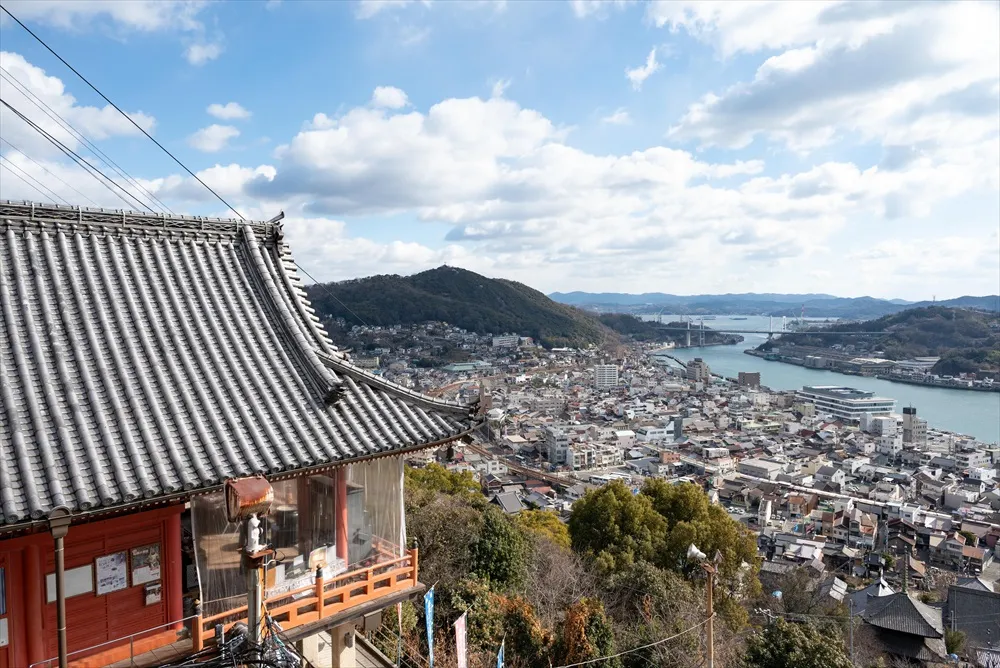
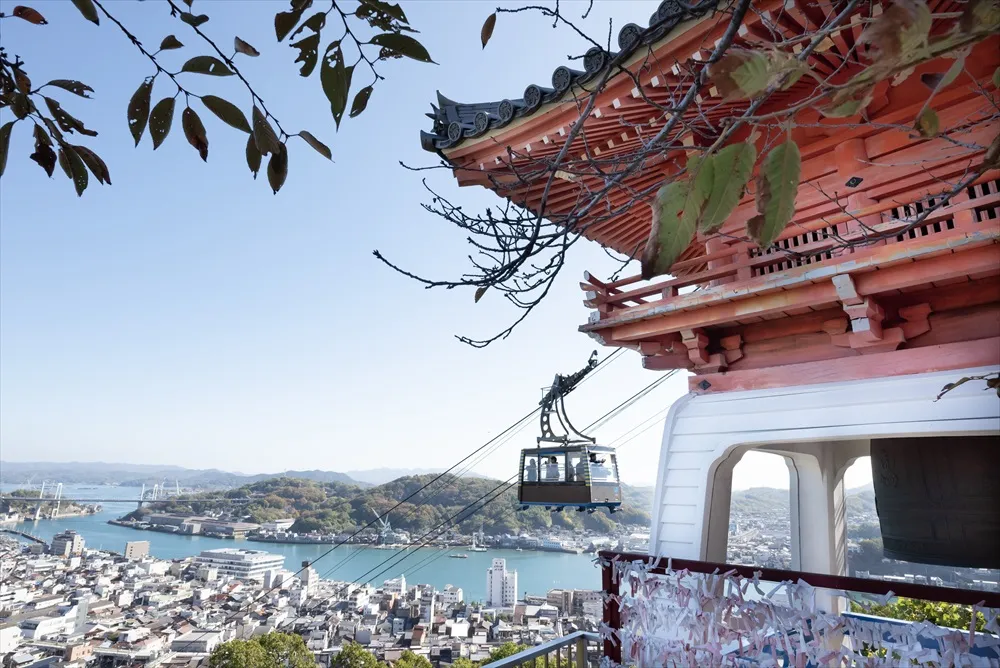
| Access | JR Onomichi Sta. → 7 min by bus → Nagaeguchi stop → Senkoji Ropeway |
JR Shimonada Station (Iyo City, Ehime)
Once known as “the station closest to the sea,” this unmanned station on the JR Yosan Line offers a superb view where the blue sea and sky seem to merge right before your eyes. It’s especially stunning at sunset when everything is bathed in red hues. Since only one train stops at JR Shimonada Station each hour, it’s best to check the timetable in advance.
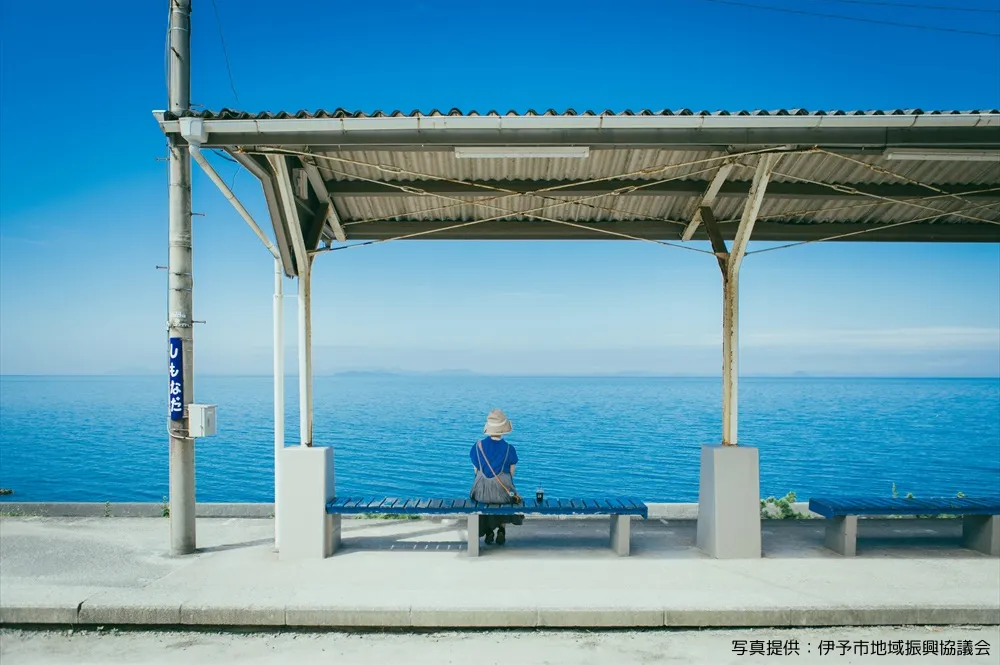
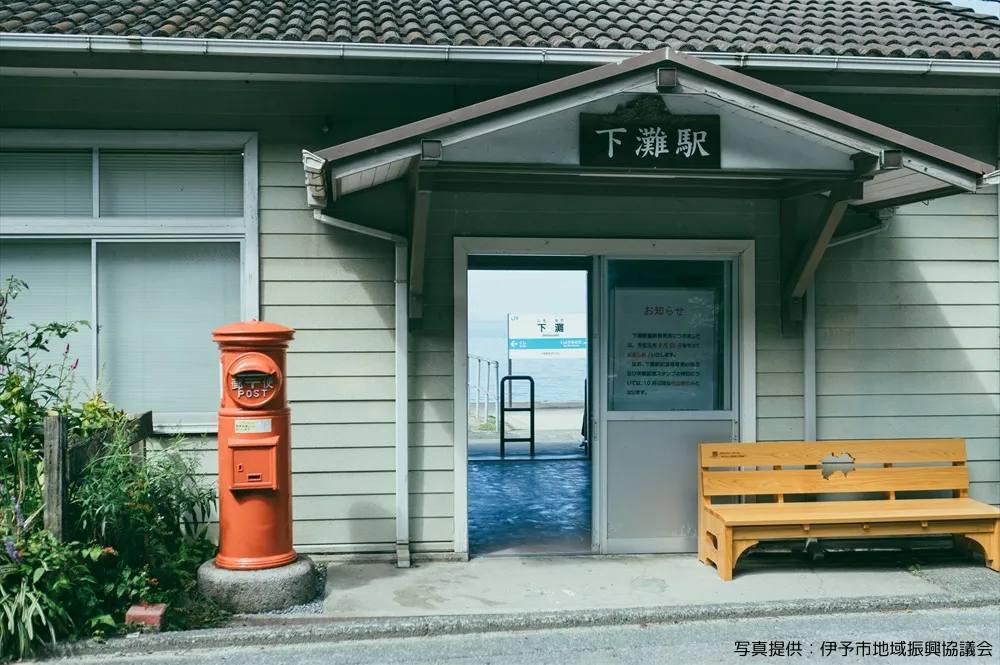
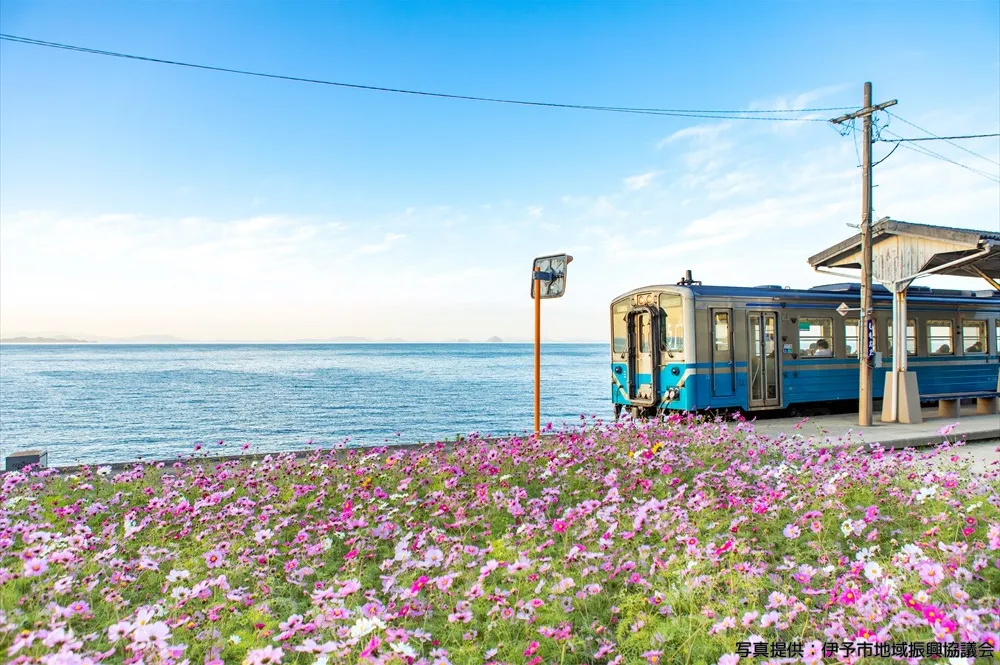
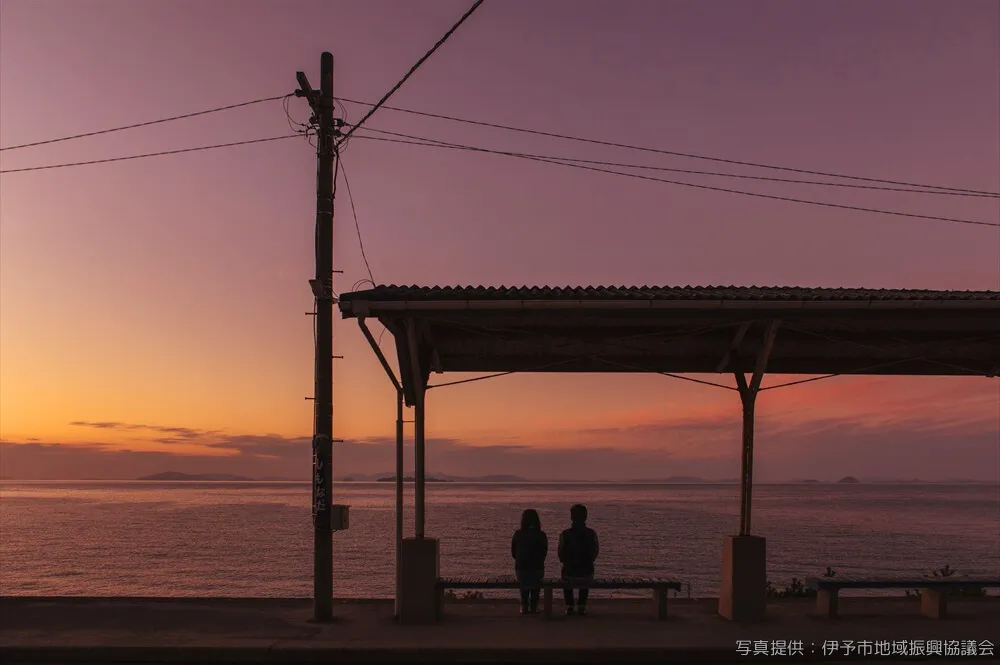
| Access | JR Matsuyama Sta. → 50 min by train → JR Shimonada Sta. |
Dive Deep into History – A Journey Through Shrines and Temples
KOTOHIRA-Gu (Kotohira Town, Kagawa)
Commonly known as “Kompira-san,” this shrine has a history of over 1,000 years. Located halfway up the mountain, it takes about 30 minutes and 785 stone steps to reach the main hall. Along the way, you’ll find historic structures scattered throughout the grounds, as well as beautiful panoramic views. The approach to the shrine is lined with traditional souvenir shops and local eateries, adding to the charm of the journey.
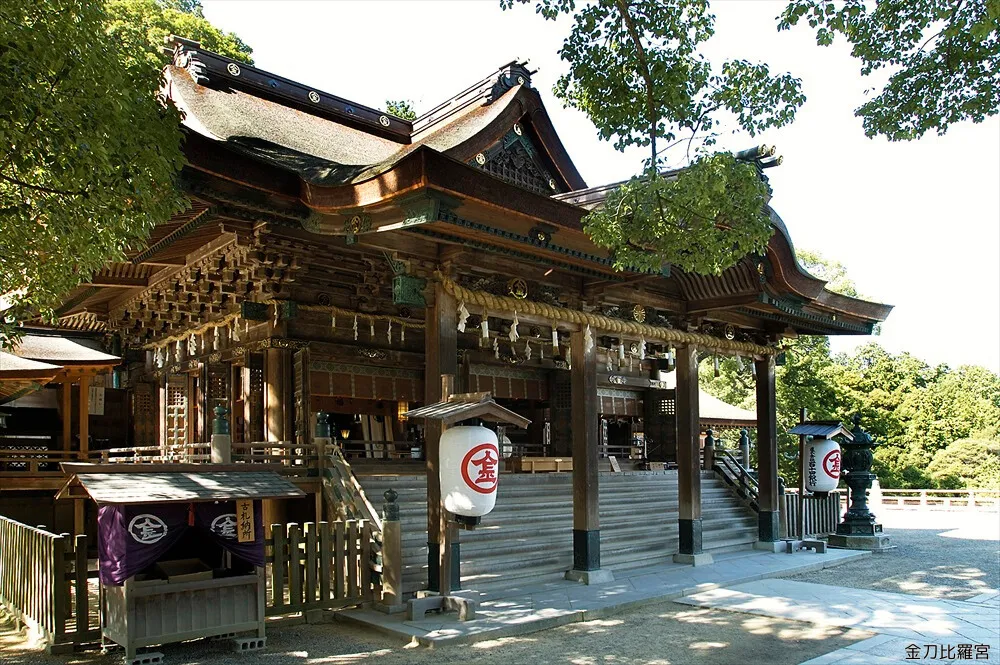
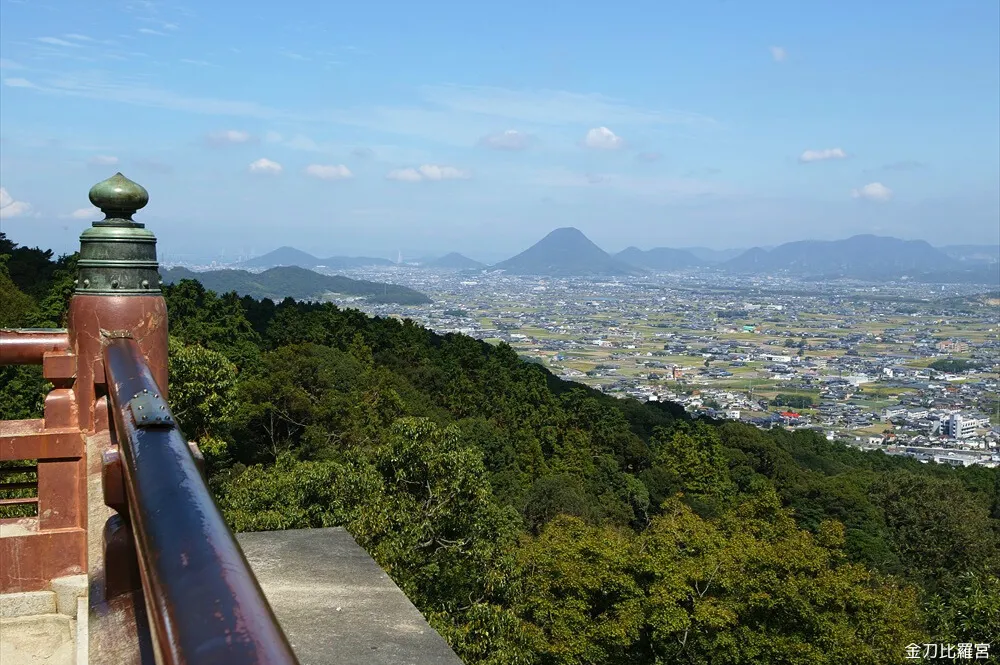
| Access | JR Kotohira Sta. → 15 min walk, Kotoden-Kotohira Sta. → 10 min walk (to the base of the approach steps) |
| URL | https://www.konpira.or.jp/ |
SHINSHOJI ZEN MUSEUM AND GARDENS (Fukuyama City, Hiroshima)
This Zen temple, established in 1965, features huge grounds where temple buildings from various periods and architectural styles have been relocated. Highlights include a beautifully landscaped Japanese garden, traditional tea rooms, and a unique temple office designed by architect Fujimori Terunobu, known for his distinctive, nature-inspired creations. Visitors can also take part in zazen meditation or tea ceremony experiences, offering a full-body immersion into the world of Zen.
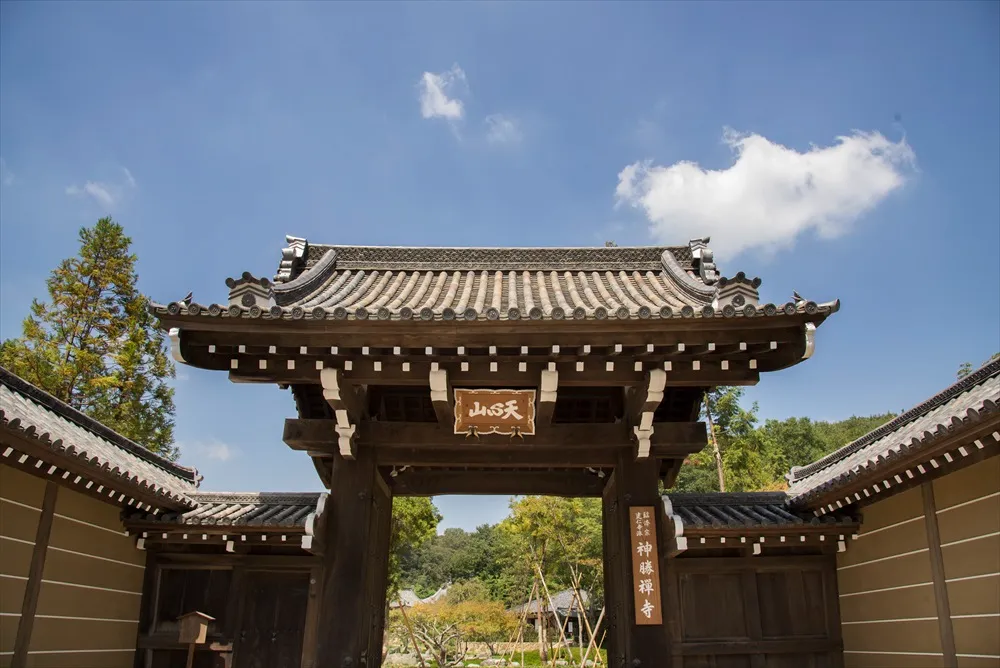
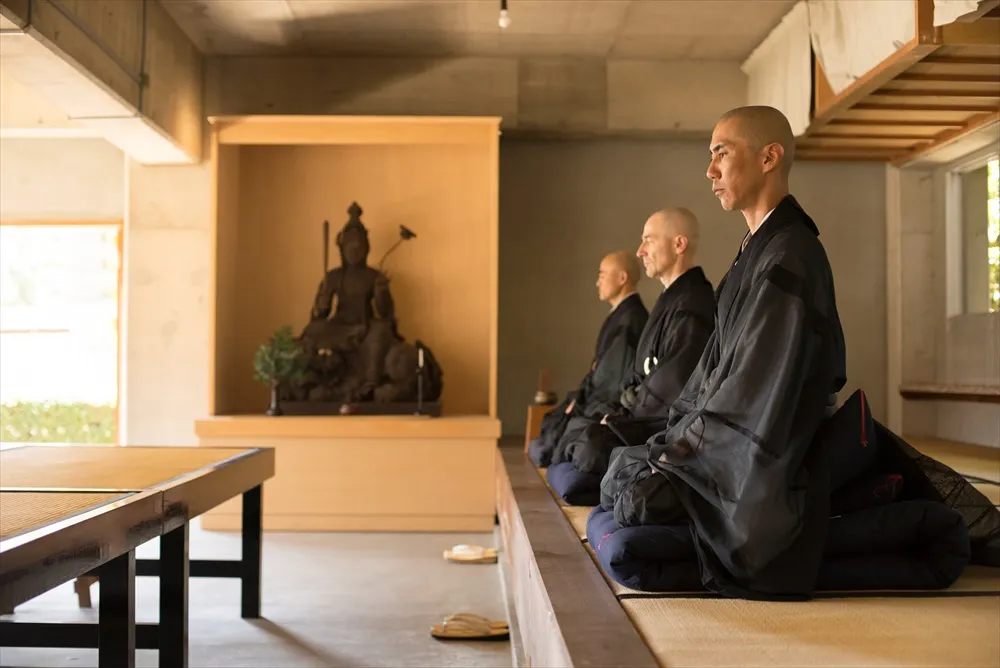


| Access | JR Fukuyama Sta. → 30 min by bus → Tenjinyama stop → 15 min walk |
| URL | https://szmg.jp/en/ |
Kibitsujinja Shrine (Okayama City, Okayama)
This shrine is associated with the legend of Kibitsuhiko no Mikoto and Ura, which is believed to be the origin of the famous Japanese folktale “Momotaro” (“Peach Boy”). Several historical remains on the shrine grounds are said to be the setting for the tale of Momotaro’s demon-slaying adventures. A highlight is the overwhelming 360-meter-long covered corridor that follows the natural contours of the mountain—a design marvel worth seeing.
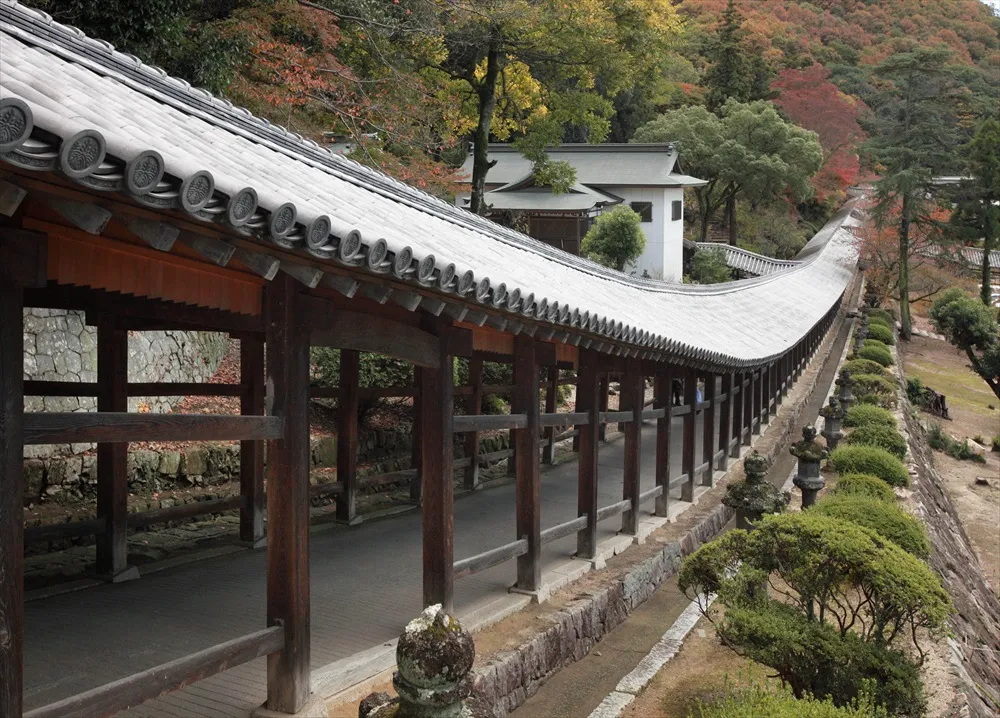
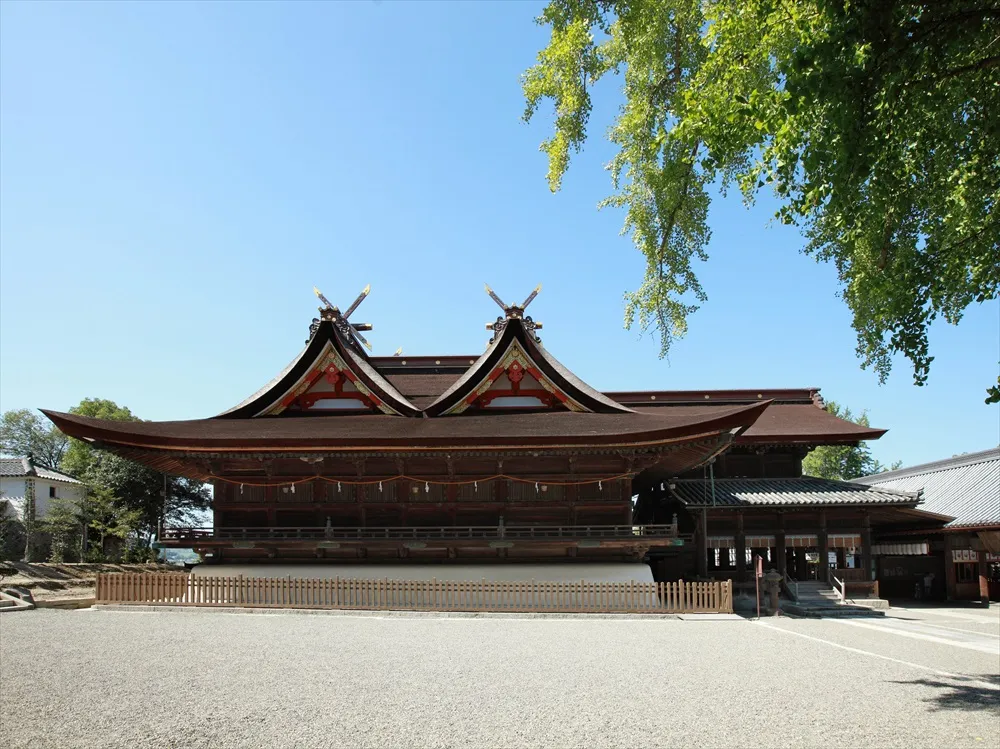
| Access | JR Kibitsu Sta. → 10 min walk |
| URL | https://www.kibitujinja.com/ |
Shoshazan Engyoji Temple (Himeji City, Hyogo)
Founded in 966, this historic temple was long supported by nobility, royalty, and famous warlords, featuring some of the finest surviving examples of traditional Buddhist architecture. The temple complex is located on a mountaintop and can be accessed via ropeway. Visitors can take part in zazen meditation or sutra copying (reservation required), offering a chance to experience Japanese Buddhist culture in a serene and spiritual environment.
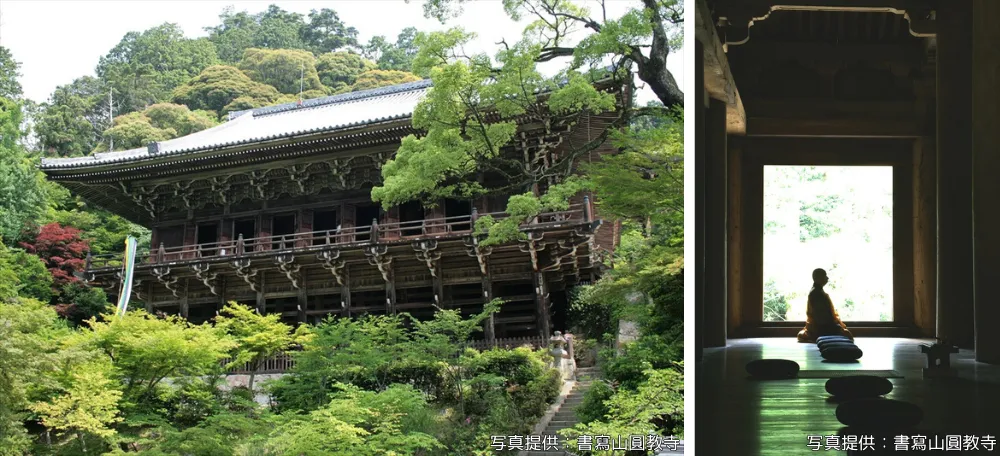
| Access | Himeji Sta. (JR, Sanyo Electric Railway) → 30 min by bus → Shosha Ropeway stop |
| URL | http://www.shosha.or.jp/_en/ |
Summer to Autumn – Limited-Time Festivals for All Five Senses
Setouchi Triennale 2025
Held every three years, this international art festival takes place on the picturesque islands of the Seto Inland Sea. This year, three new areas will be added, with the festival split into Spring, Summer, and Autumn sessions. Follow the art trail across the islands’ beautiful nature, interact with locals, and immerse yourself in the local culture.
Dates:
Summer Session (31 days): August 1 (Fri) – August 31 (Sun)
Autumn Session (38 days): October 3 (Fri) – November 9 (Sun)

Photo: Osamu Nakamura
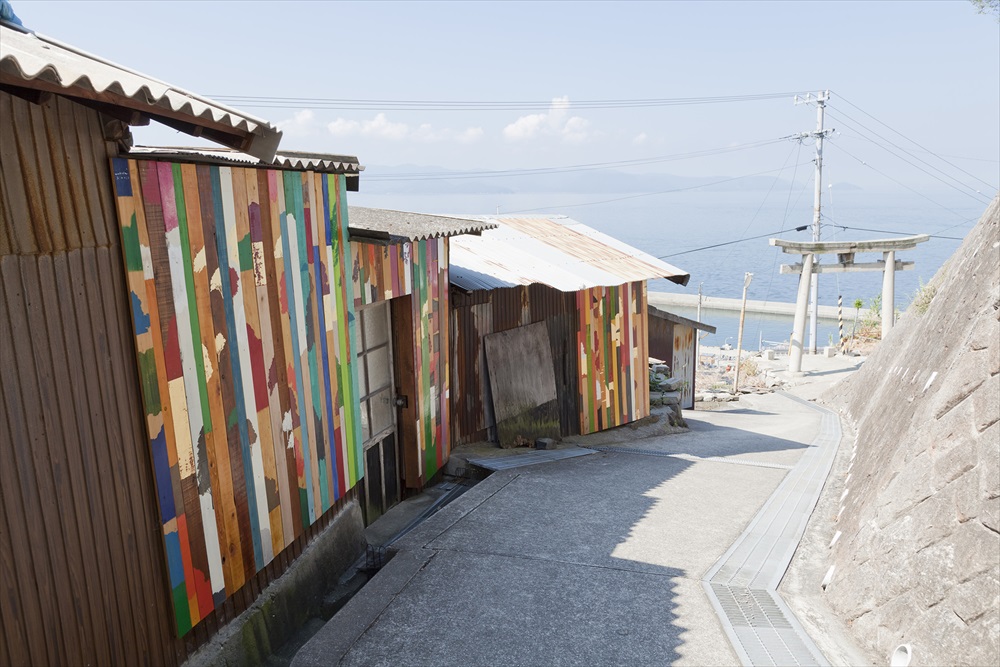
Photo:Osamu Nakamura

Photo: Kimito Takahashi

Photo: Osamu Nakamura
| URL | https://setouchi-artfest.jp/en/ |
Don’t miss it! Naoshima New Museum of Art
On May 31, 2025, the Naoshima New Museum of Art opened on Naoshima Island in Kagawa Prefecture, which is also a venue for the Setouchi Triennale. One of the highlights is the architecture designed by world-renowned architect Ando Tadao.
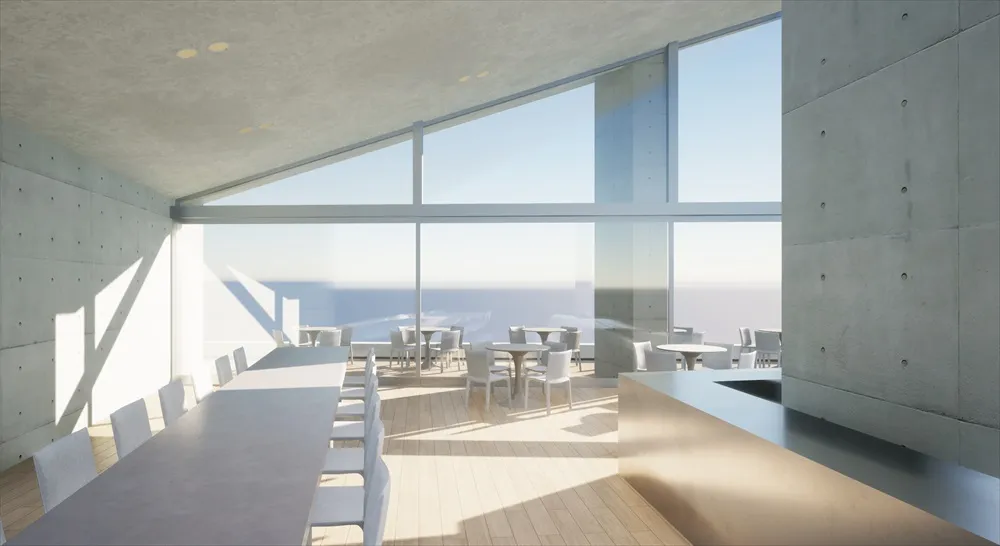
©Tadao Ando Architect & Associates

©Tadao Ando Architect & Associates
| Access | Takamatsu Port (Kagawa) → 35–60 min by ferry → Naoshima / Uno Port (Okayama) → 20 min by ferry → Naoshima Note: Multiple ferry routes available. Please check the website of Shikoku Kisen for details. https://www.shikokukisen.com/ |
| URL | https://benesse-artsite.jp/nnmoa/ |
Hiroshima Architecture Exhibition 2025
The Setouchi region, known for its unique natural beauty and cultural heritage, is also home to many architectural gems. This year marks the inauguration of the Hiroshima Architecture Exhibition. One of the exhibitions at the Shinshoji Zen Museum and Gardens in Fukuyama City features the reconstruction project of Tange Kenzo’s private residence.

| URL | https://hiroshima-architecture-exhibition.jp/en/ |
Awa Odori Festival in Tokushima City
Awa Odori is a traditional performing art of Tokushima Prefecture, and is considered one of Japan’s three major Bon Odori festivals. Dancers in vibrant costumes deliver dynamic, high-energy performances that captivate the crowd. Spectators can even join in through the spontaneous “Niwaka-ren” dance groups, making it easy to get swept up in the city’s electric atmosphere.
Dates: August 11–15, 2025 (indoor performance only on the 11th)

| Access | Around JR Tokushima Sta. (varies by venue) |
| URL | https://www.awaodorimirai.com/ |
Yosakoi Festival in Kochi
Held every August in Kochi City, this major dance festival is one of Japan’s most celebrated. Around 20,000 dancers in colorful costumes perform a dynamic forward-moving dance while rhythmically clapping Naruko instruments in their hands at designated performance and competition areas throughout the city.
Dates: August 9 – 12, 2025 (main event on the 10th and 11th)
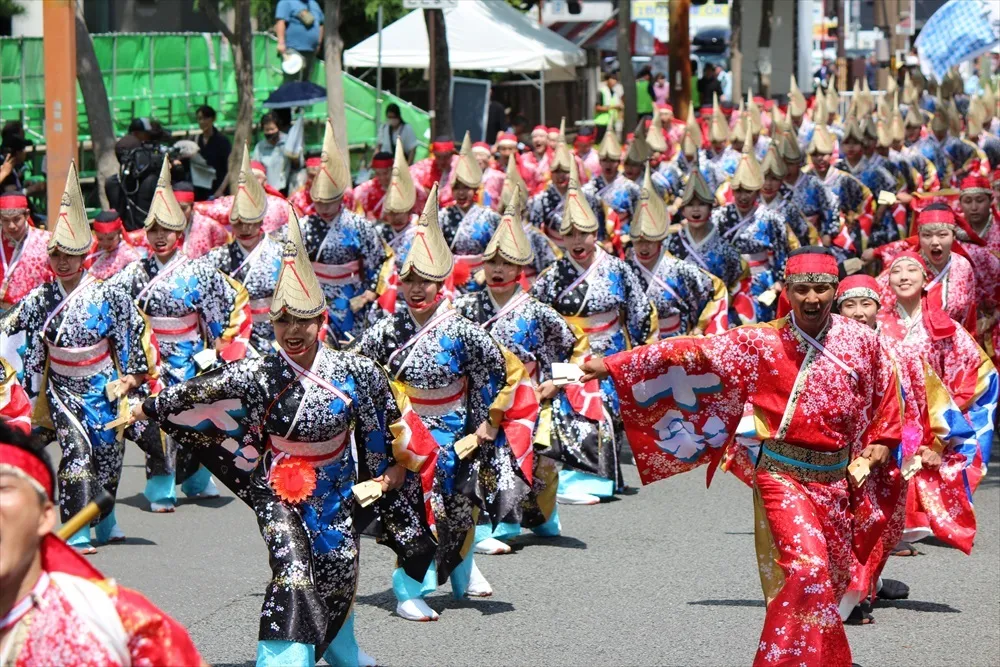
| Access | Around JR Kochi Sta. (varies by venue) |
| URL | http://www.cciweb.or.jp/kochi/yosakoiweb/ |
